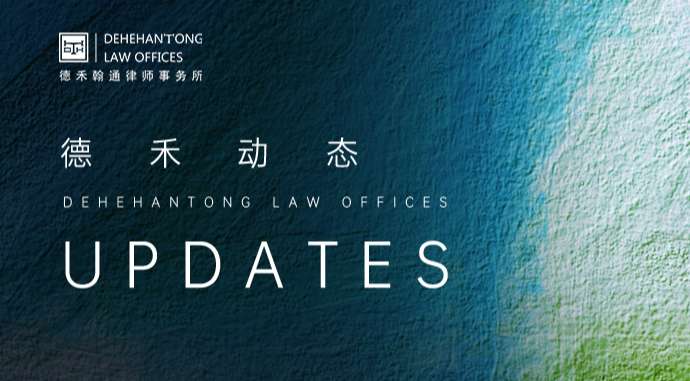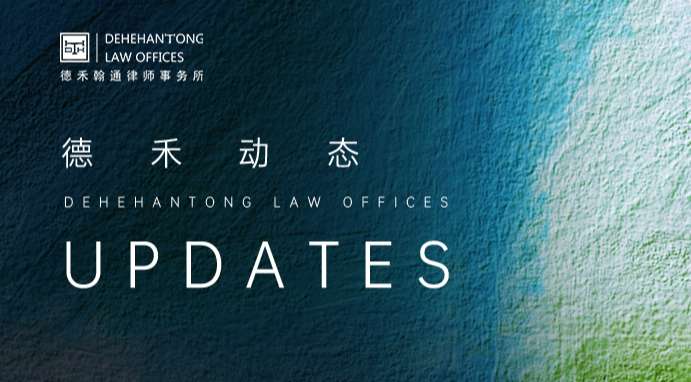Analysis of DeepSeek equity structure
DeepSeek, the full name of Hangzhou Deepseek Artificial Intelligence Basic Technology Research Co., LTD., was founded on July 17, 2023, with a registered capital of 10 million yuan. On January 20, 2025, the company officially released the DeepSeek-R1 model, which attracted global attention.
In order to further understand DeepSeek's idea, the author draws DeepSeek's equity structure chart based on the published information, and analyzes and discusses its equity structure.
01.Absolute control
From the perspective of equity proportion, Liang Wenfeng has held more than 80% of DeepSeek's shareholder rights and interests through direct and indirect shareholding, and is an absolute controlling shareholder.
From the perspective of control, Liang Wenfeng, as a shareholder holding 68.21% of Ningbo Chengpu Business Consulting Co., LTD. (" Chengpu Company "), through controlling Chengpu Company, Thus controlling Ningbo Chengxin Roosu Enterprise Management Consulting Partnership (Limited Partnership) (" Chengxin Partnership ") and Ningbo Chengen Enterprise Management Consulting Partnership (limited partnership) (" Chengen Partnership "), which serve as GP of Chengpu Company, and ultimately effectively controlling DeepSeek. Liang Wenfeng holds 68.21% of the equity of Cheng Pu Company, which obviously exceeds the requirements of two-thirds of the voting rights required by the shareholders' meeting of the limited liability company to amend the articles of association, increase or reduce the registered capital, and the resolution of the merger, division, dissolution or change of the company form, except for individual matters that require unanimous consent of all shareholders (such as targeted capital reduction, etc.). Liang Wenfeng has the absolute right to speak in Cheng Pu Company and controls DeepSeek layer by layer.
02.Risk isolation
DeepSeek is 1 per cent owned directly by Liang Wenfeng and 99 per cent by Cheng En's partnership, thus avoiding becoming a one-man company and forming the first risk isolation.
The GP (general partner) of Cheng En Partnership and Cheng Xin Partnership is Cheng Pu Company, and GP bears unlimited joint and several liability for the debts of the partnership, but the shareholders of the limited liability company bear responsibility for the company according to the amount of capital contribution they have signed up for, effectively isolating the personal risks of Liang Wenfeng, Li Huan, Zheng Da Wei and Chen Zhe (the "core team") of Cheng Pu Company, forming a second risk isolation.
Article 23 of the Company Law of the People's Republic of China stipulates that where a company's shareholders abuse the independent status of the company legal person and the limited liability of the shareholders to evade debts and seriously harm the interests of the company's creditors, they shall bear joint and several liability for the company's debts.
Where a shareholder uses two or more companies under his control to carry out the acts prescribed in the preceding paragraph, each company shall be jointly and severally liable for the debts of either company.
Where a company has only one shareholder and the shareholder cannot prove that the property of the company is independent of his own property, he shall be jointly and severally liable for the debts of the company.
Because DeepSeek is owned by two shareholders, it avoids becoming a one-person company and thus avoids proving that "the company's property is independent of the shareholders' own property". The shareholders shall not be jointly and severally liable for the debts of the company unless "the shareholders abuse the independent status of the company legal person and the limited liability of the shareholders to avoid debts and seriously harm the interests of the creditors of the company".
In the current investment and financing practice, it is more common that the actual controller directly acts as the GP of the holding platform (limited partnership). In addition to tax saving and other reasons, the author believes that the main reason is that the actual controller, the holding platform and the target company have usually acted as the statement guarantor, compensation liability party and repurchase obligation party in the Capital Increase Agreement and the Shareholders Agreement.
03.Equity incentive
Cheng En partnership, Cheng Xin partnership as a shareholding platform, what role do they play? How are future shares likely to be divided?
The author noted that even if Cheng Pu company as GP in Cheng En partnership, Cheng Xin partnership shareholding ratio is only 0.1%, but the core team in Cheng Pu company's internal shareholding ratio, and Cheng Xin partnership shareholding ratio is basically the same, that is, Liang Wenfeng: Li Huan: Zheng Da Wei: Chen Zhe roughly 68.2% : 12% : 12% : 7.7%. As the decision-making body of DeepSeek, Cheng Pu Company has a low possibility of changing the shareholding ratio, which can be understood as the agreed ratio between the core team. Then, assuming that the share of the core team has been divided in Cheng Pu Company and Cheng Xin Partnership according to the above-mentioned proportion, the Cheng Xin Partnership can be understood as the core team shareholding platform, which holds 49.8% of the share of Cheng En Partnership, and the share incentive share for subsequent persons may come from the 50.1% share held by Liang Wenfeng in Cheng En Partnership, that is, Cheng Xin Partnership as the core team shareholding platform. GP and LP shares remain unchanged, and Cheng En Partnership is DeepSeek's total shareholding platform for carrying new and old incentive objects, with Cheng Pu Company holding 0.1% of the shares as GP, Cheng Xin Partnership consisting of the core team holding 49.8% of the shares as LP, and Liang Wenfeng currently holding 50.1% of the shares as LP self-holding and holding on behalf of LP. In the future, the 50.1% share may be adjusted to another newly established partnership to carry subsequent important equity incentive objects. Another hypothesis is that Cheng Pu Company as DeepSeek decision-making body, the core team share unchanged, and Liang Wenfeng's personal share in Cheng En partnership 50.1% share ownership is completed, then it may also be Liang Wenfeng in Cheng Xin partnership held 68.14% of the share for subsequent important people equity incentives, such as adjusting the structure in this way, that
04.Two-tier nested partnership
Cheng Xin Partnership and Cheng En partnership form a double-layer nested partnership structure, the author believes that first of all, it will help DeepSeek's first-layer equity structure to be absolutely stable with Liang Wenfeng holding 1% and Cheng En's partnership holding 99%. Secondly, the tax liability of double-layer nested partnership penetrates to natural persons, and individual income tax should be calculated according to "interest, dividend, bonus income" or "business income", which is controversial in practice. The Notice of the State Administration of Taxation on the implementation of the Provisions on the Levying of Individual Income Tax on Investors of Sole Proprietorship Enterprises and Partnership Enterprises (State Tax Letter (2001) No. 84) stipulates: 2. On the taxation of interest, dividends and dividends on foreign investment of sole proprietorship enterprises and partnership enterprises: The interest or dividends and bonuses returned from the foreign investment of a sole proprietorship enterprise or a partnership enterprise shall not be incorporated into the income of the enterprise, but shall be separately regarded as the income of interest, dividends and bonuses obtained by the individual investor, and shall be calculated and paid individual income tax according to the taxable items of "interest, dividends and bonuses". In the case of returning interest or dividends or dividends to foreign investment in the name of a partnership enterprise, the income from interest, dividends and dividends of each investor shall be determined in accordance with the spirit of Article 5 attached to the Notice, and individual income tax shall be calculated and paid according to the taxable items of "interest, dividends and dividend income" respectively. In some regions, the tax authorities' interpretation of the above provisions [calculating individual income tax according to the taxable items of "interest, dividend and bonus income"] is only applicable to natural person partners, that is, only applicable to the single-tier partnership structure, and the final natural person partners of the multi-tier partnership structure shall pay individual income tax according to the "business income".
The reason for this practical dispute is related to the legal background of the State Tax Letter (2001) No. 84. Article 9 of the Partnership Enterprise Law of the People's Republic of China (1997, now repealed) stipulates that a partner shall be a person with full capacity for civil conduct.
Article 8 of the Measures for the Administration of Partnership Registration of the People's Republic of China (1997, now repealed) stipulates that the following documents shall be submitted to the enterprise registration authority when applying for the establishment of a partnership: (2) identity certificates of all partners.
Article 2 of the Partnership Enterprise Law of the People's Republic of China (Revised in 2006 and effective now) stipulates that "partnership enterprises" as mentioned in this Law refer to general partnerships and limited partnerships established within the territory of China by natural persons, legal persons and other organizations in accordance with this Law.
"Regulations of the People's Republic of China on the Administration of Registration of Market Entities" (revised in 2021, in effect), Article 16 to apply for registration of market entities, the following materials shall be submitted: (1) Application; (2) the applicant's qualification documents and the identity certificate of a natural person; (3) Documents related to the residence or main business premises; (4) the articles of association of the company, non-company enterprise legal person, farmer specialized cooperative (association) or the partnership agreement of the partnership enterprise; (5) Other materials required by laws, administrative regulations and the market supervision and administration department under The State Council. It can be understood that when the National Tax Letter (2001) No. 84 was issued, the partners of the partnership at that time were only natural persons, so the taxation principle of the document only considered single-layer partnerships, and after the amendment of the Partnership Law in 2006, the partners have included natural persons, legal persons and other organizations, and the partnership has thus emerged a double-layer nested structure. The current effective State tax Letter (2001) No. 84 has not been updated simultaneously.
Overall, DeepSeek's current multi-tier ownership structure carries a heavy tax cost. A company's ownership structure often requires trade-offs between control, risk prevention, and tax costs.
05.Liang Wenfeng does not hold the position of director supervisor
According to the published information, the legal representative, executive director and general manager of DeepSeek is Pei Tian, and the supervisor is Wang Miaojun; The legal representative, executive director and general manager of Cheng Pu is Liang Jian, and the supervisor is Zheng Dawei. Liang Wenfeng does not serve as DeepSeek, Cheng Pu company's director and supervisor.
For Liang Wenfeng, he can still change the selection of directors through the resolution of the shareholders' meeting to determine the candidates in the core positions, but for Pei Tian, Wang Miaojun, Liang Jian and Zheng Dawei, attention should be paid to the duties and obligations of the current Company Law for the directors, supervisors and executives of the company. Compared with the old Law, the new Company Law further strengthens the statutory responsibilities of directors and supervisors and specifies the liability for compensation. Whether it is from the perspective of corporate compliance or the perspective of personal risk management of directors and supervisors, under the current legal environment, the personnel serving as directors and supervisors of the company should clarify their responsibilities and comply with the statutory obligations.
To sum up, the company's equity structure is demand-oriented with business plan as the demand, equity structure design as the implementation plan, and the ultimate task is to achieve the strategic goals of the company and the real controller.
Recommended Information
-
Case StudiesDehehantong helped the state-owned financial asset management company successfully acquire 313 million yuan non-performing assets package project2025-02-06
-
ArticlesThe arbitration view that lasted 16 years may have a major change, Shanghai employers lose the option of open-ended labor contracts?2025-01-21
-
ArticlesRelated legal interpretation and risk tips on "Implementing gradual delay of statutory retirement age"2025-01-17
-
UpdatesThe first meeting of the National Management Committee of Dehehantong in 2025 concluded successfully in Dubai.2025-01-16
-
Case StudiesDehehantong helped state-owned financial asset management companies complete market-oriented debt-to-equity swap projects2025-01-14















